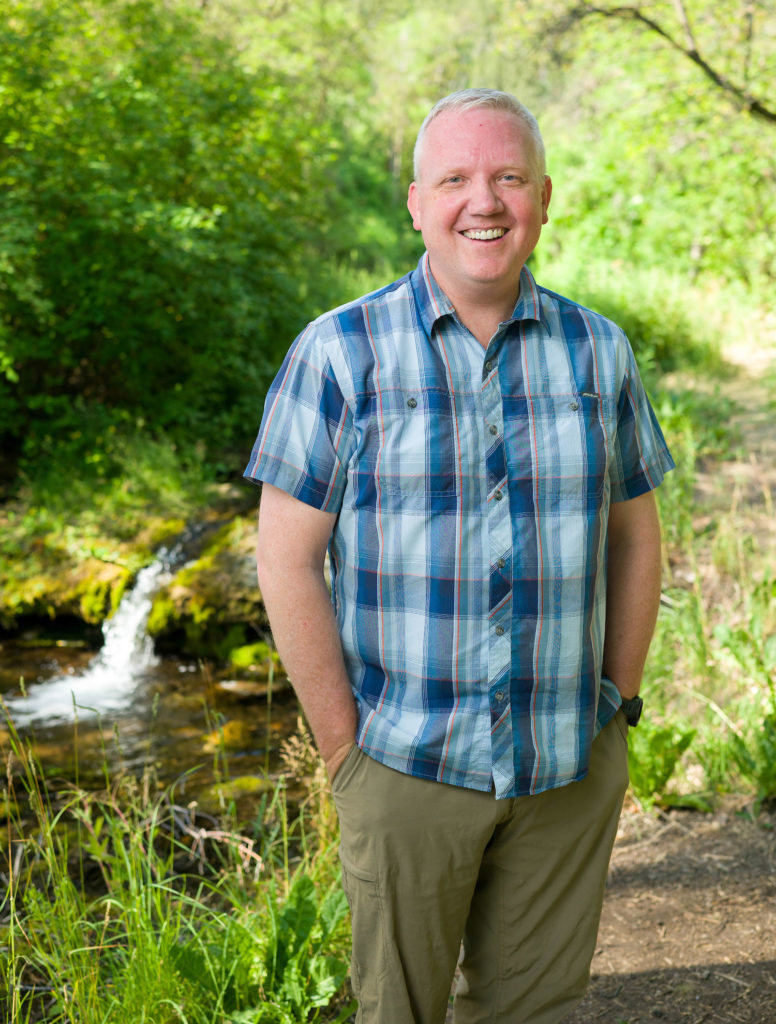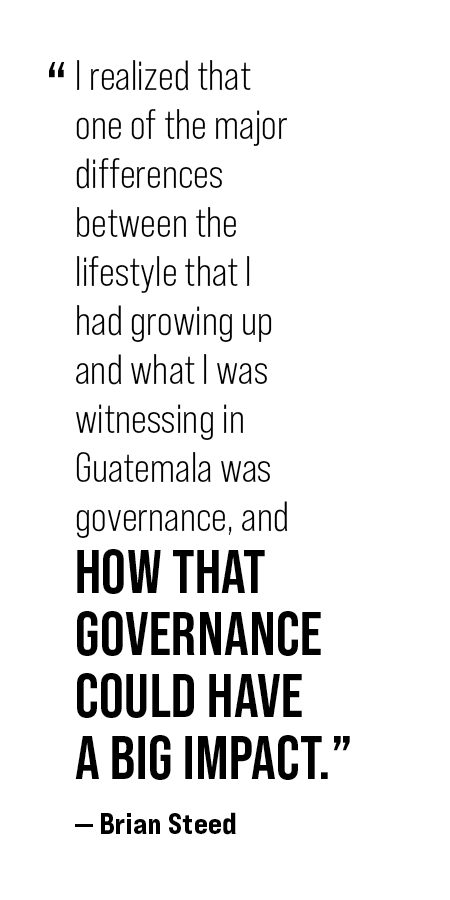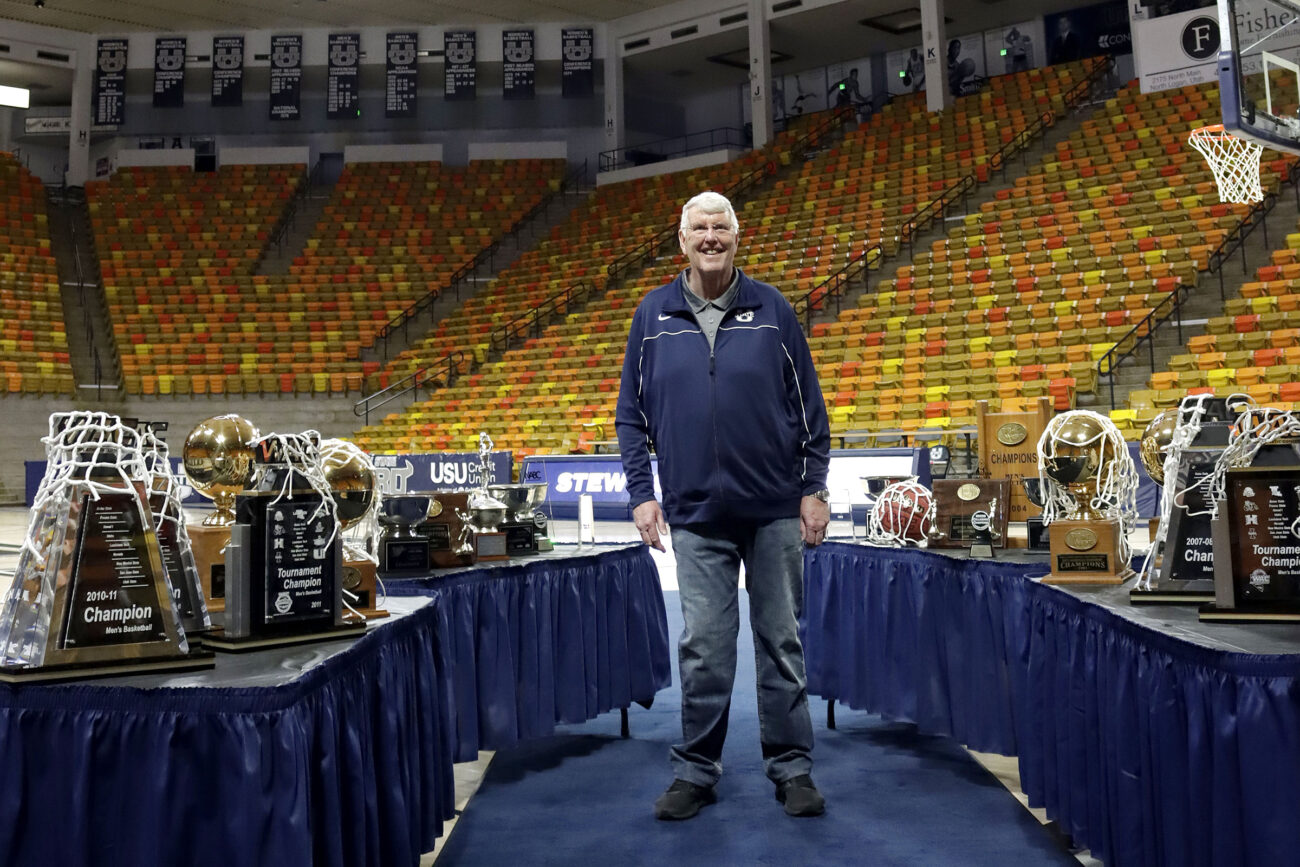The Connector: Brian Steed Links Natural Resources Research with Policy
Brian Steed ’97, M.A. ’00, the inaugural executive director of the new Janet Quinney Lawson Institute of Land, Water and Air (ILWA), is pretty familiar with Utah State University.

As the youngest son of Allan Steed, the first director of USU’s Space Dynamics Laboratory, Steed recalls spending “a lot of time hanging out and buying food out of the vending machines as a kid, and spending time with my siblings on Saturdays when my dad was doing work over there on the latest instrument.”
Steed earned both his undergraduate and graduate degrees in political science at USU and has taught as an economics instructor in the Jon M. Huntsman School of Business. After spending seven years in Washington, D.C., serving as chief of staff to Utah Congressman Chris Stewart, then as the Deputy Director of Programs and Policy at the Bureau of Land Management (BLM), Steed returned to the Beehive State in June 2019 to head the Utah Department of Natural Resources.
But he left the cabinet of Governor Spencer Cox, ’98, a former classmate, to lead the fledgling institute, established in 2021 to demonstrate USU’s expertise in land, water, and air issues with civic and legislative leaders.
“Utah State is home,” Steed says. “Logan and Cache Valley are home. So, it was an easy decision, especially to do something that I genuinely love doing.”
We talked with Steed during an on campus visit a couple of weeks before he officially stepped into his new role on July 1. This conversation has been lightly edited.
Jeff Hunter: I assume when you were a student here that you didn’t really envision yourself in a position like this. What helped steer you in this direction?
Brian Steed: When I started my freshman year, I didn’t know what I wanted to do for sure, then I went on a mission to Guatemala (for the Church of Jesus Christ of Latter day Saints), which has all of the natural resources and amenities and beauty of any place you would ever want to go. The people are hard-working. It’s an amazing place. But I noticed that rivers ran different colors, depending on the day and who was dumping there. I realized that one of the major differences between the lifestyle that I had growing up and what I was witnessing in Guatemala was governance, and how that governance could have a big impact. And so that’s how I ended up studying political science. I got a minor in economics because I saw there was a lot of crossover with how people behave based on whatever incentives they’re provided.
What was your experience at the BLM like, especially while basically serving as the director for a couple of years?
It’s a big agency — one that’s really important to the state of Utah. The BLM manages 245 million acres of land, and that’s just surface area. It also manages 700 million acres of subsurface. And while most of BLM land is in the western United States in big forests and huge deserts, there are assets all over the country and interesting properties that you would never think about like a lighthouse in Florida. There are really dedicated people at the BLM.
There are 9,000 employees who have a hard job because they’re tasked with this idea of multiple-use lands, and how you do preserve the landscape, but also allow different uses? That means that there’s a ton of discretion, and then during each administrative swing, there gets to be a pretty big swing on that pendulum.

Have your experiences in Washington prepared you for a role where you’re trying to serve as an intermediary between research involving land, water, and air, and civic and legislative leaders?
I think having experience on the federal side, as well as on the state side, that you’re able to see that sometimes there are questions for which people have a ton of interest and a desire for solutions, but sometimes we’re not aligning our research institutions towards those questions. I’ve found that often times the answer already exists, you just have to go look for it. Someone has already answered your question, it’s just that there’s been no linkage connecting the answer to the questioner. And trying to align those two is something I think ILWA is really well set up to do.
What did you enjoy most about your time at the Division of Natural Resources?
On the federal side it’s frustrating because it’s so big. You can make changes on the fringes, but it’s really hard to make major changes on speeding up processes or getting better quality processes. But in state government, it’s a lot easier to make those changes and put out policy reforms that make big impacts. Over the last three years, we’ve had hard conversations in Utah about water. Being able to lead the charge at DNR to say, ‘What are we going to do about the water resources we currently have? How are we are going best manage those?’ and come up with broad-based solutions has been a challenge. During the last legislative session, the legislature came up with more policy solutions. And to be part of that — feeding ideas, helping testify, or analyzing those proposed policy solutions — was really rewarding.
So, why leave the DNR for this position?
I loved my job at DNR. I’ve loved working on the issues I worked on and working with the governor. But these types of opportunities don’t come along very often — to work in a center doing the things that you’re passionate about and to do in a place that you love like Utah State. When you look at what this institute is set up to do — answer the hard questions on land, water, and air — that’s intellectually exciting and emotionally appealing to me. And ultimately, it’s something I’m very much looking forward to doing. I hope we have an impact on the state in aligning the brainpower of the university, the real-world problems presented by land, water, and air, and devising solutions.
I’m sure you’ve noticed some changes in Cache Valley since leaving, which you’ll likely address at ILWA.
We had inversions here when I was growing up, but it’s worse now. And it’s going to be a difficult problem to solve, but it’s something we really need to get a hold of.
We’re also eating up all the land in a place that is known for its agricultural value. But that’s the state experience right now, in part, because people have decided that you can live anywhere and work anywhere. Technology’s a blessing, but it’s going to put constraints on places that haven’t really experienced it before. And I think that’s what makes this new job opportunity so exciting. I would argue the top three limiting factors for growth here concerning natural resources are availability of land, availability of water, and quality of air.
Being in the middle of a brutal drought, it would seem that availability of water would be at the top of that list.
Water is certainly driving much of the conversation right now because we’re in this drought that’s unprecedented in the last 1,200 years and dealing with water scarcity, combined with increased demand. We are the fastest-growing state in the nation.
On the air side, we have a unique situation here in the West, but especially here in Utah where we have inversions and trying to determine how we can have improved air quality. There aren’t a lot of really easy solutions, but there are lots of things that we can do better. And marginal changes can make a big difference.
On the land front, the conversion from ag to an urban space has real impacts on how people view the landscape around them. And it has real impacts on wildlife. Trying to figure out how to understand how they interface is going to be really challenging but also really fun.







Mike Mower September 5, 2022
Brian Steed is such a class act. USU is fortunate to have him on campus. He will do great things to help the environment and promote sustainability in Utah and throughout the West.